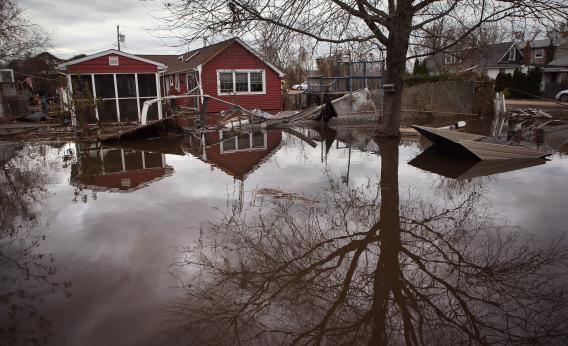When Sandy hit the east coast of the United States on October 29, it not only flooded the New York City Subway and became an important election issue. It also resurrected the claim that global warming was to blame, together with the morally irresponsible argument that we should help future hurricane victims by cutting CO2 emissions.
Now, global warming is real, and cutting CO2 is a good idea when the reduction cost is lower than that of the damage it prevents. There is also a grain of truth in the connection between hurricanes and global warming: The United Nations Intergovernmental Panel on Climate Change expects stronger but fewer hurricanes toward the end of this century.
But the end of the century is 88 years from now, and blaming global warming now is simply unconvincing In its 2012 report on extreme weather, the IPCC said it puts little trust in any attribution of hurricanes to global warming.
The authors of one of the central Science papers for the U.N.’s hurricane estimates put it clearly: “It is premature to conclude that human activities … have already had a detectable impact on Atlantic hurricane activity.” We will be unable to detect an impact “until we near the end of the century.”
In fact, the U.S. has not seen a hurricane of Category 3 or higher since Wilma in 2005. Those seven years without strong hurricanes is the longest such span in more than a century. (Sandy, which was downgraded from a hurricane before it hit New York, was rebranded in the media as a “superstorm.”
While Bloomberg claims that Sandy is the costliest storm in U.S. history, and holds implications for “the survival of the human race,” this is simply wrong, as any recollection of the costs of Hurricane Katrina would show. When adjusted for inflation and growth of coastal communities, Sandy ranks only 17th for U.S. storms, and both the number and power of hurricanes that make landfall in the U.S. have been declining slightly since 1900, not increasing.
But the real damage from the claims about Sandy and climate change stems from what often follows: the argument that if global warming caused this destruction, we should help future victims of hurricanes by cutting CO2 emissions now. As Rober Redford put it, we need to “reduce the carbon pollution that’s fueling these storms.” Like so many others, he deplores doubters: “By ignoring the scientific facts, they dishonor the human suffering brought on by climate change.”
Unfortunately, focusing on cutting CO2 would really dishonor human suffering, because any realistic carbon cuts will do virtually nothing for the next 50 to 100 years.
Consider sea-level rise, which caused by far the most damage in New York. Models show that the world’s most ambitious climate policy, the EU’s “20-20-20” plan, will have a net cost of roughly $250 billion a year for the rest of the century, or about $20 trillion in total. Yet it will reduce sea-level rise by one-third of an inch by 2100. If the U.S. embarked on a similar plan, the cost and the benefit would probably be on a similar scale: less than one inch reduction in sea-level rise by the end of the century at a net cost of about $500 billion annually.
Consider this extremely unrealistic scenario: Even if we almost immediately could get the entire world—including China and India—on board for drastic carbon cuts, and even if we would suck CO2 out of the atmosphere toward the end of the century, we could reduce sea level rise by only 7 to 18 inches by the end of the century. Models show that the cost, by then, would be at least $40 trillion annually.
Contrast this to what New York City is rightly concerned about: the 3.3 percent chance each year (entirely without global warming) that a Category 3 hurricane will hit New York. This would cause sea surges of up to 25 feet (about 10 feet higher than Sandy), putting Kennedy Airport under 19 feet of water. Much of the risk could be managed by erecting seawalls, building storm doors for the subway, and simple fixes like porous pavements—all at a cost of around $100 million a year.
Sandy underscored a fundamental question for all parts of the world that are affected by hurricanes. If we want to reduce hurricane damage, should we focus primarily on a very cheap solution that would enable us to handle storm surges much better within a few years, or on an incredibly expensive solution that would require almost a hundred years to avoid one-third inch of 25-foot surges?
The morally defensible answer is clear, and it has nothing to do with immediate reductions in CO2 emissions.
This article was originally published by Project Syndicate. For more from Project Syndicate, visit their Web site, and follow them on Twitter or Facebook.
